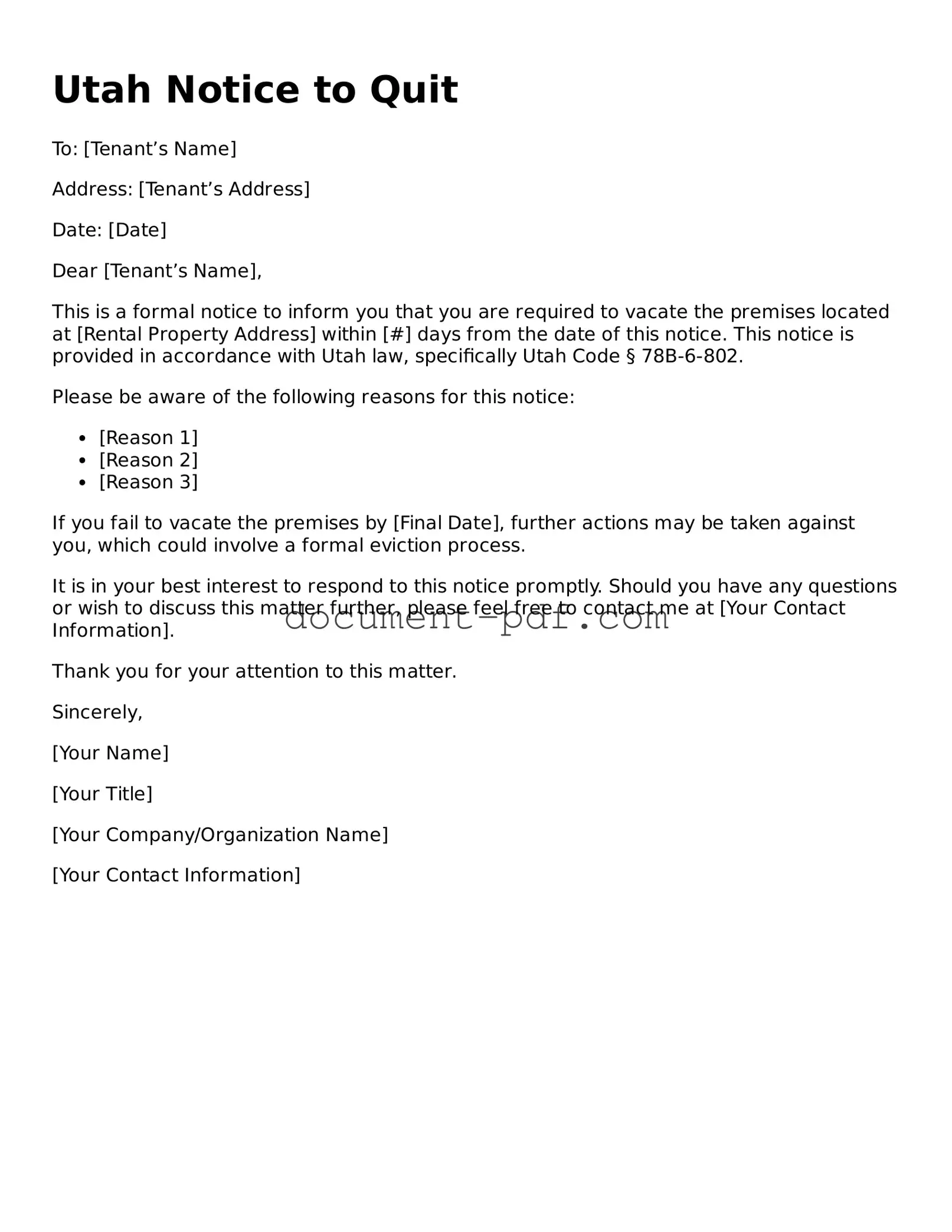Attorney-Verified Utah Notice to Quit Template
The Utah Notice to Quit form is a legal document that a landlord uses to notify a tenant to vacate the rental property. This notice typically outlines the reason for eviction and provides a deadline for the tenant to leave. Understanding how to properly fill out this form is crucial for landlords to ensure compliance with Utah law.
Ready to take the next step? Fill out the form by clicking the button below.
Access Notice to Quit Editor Here
